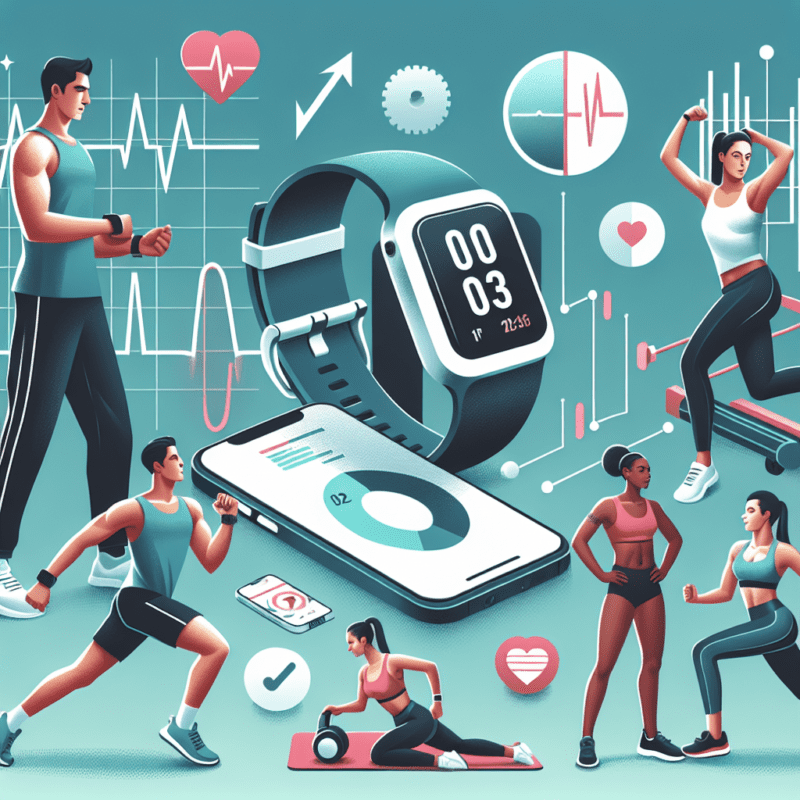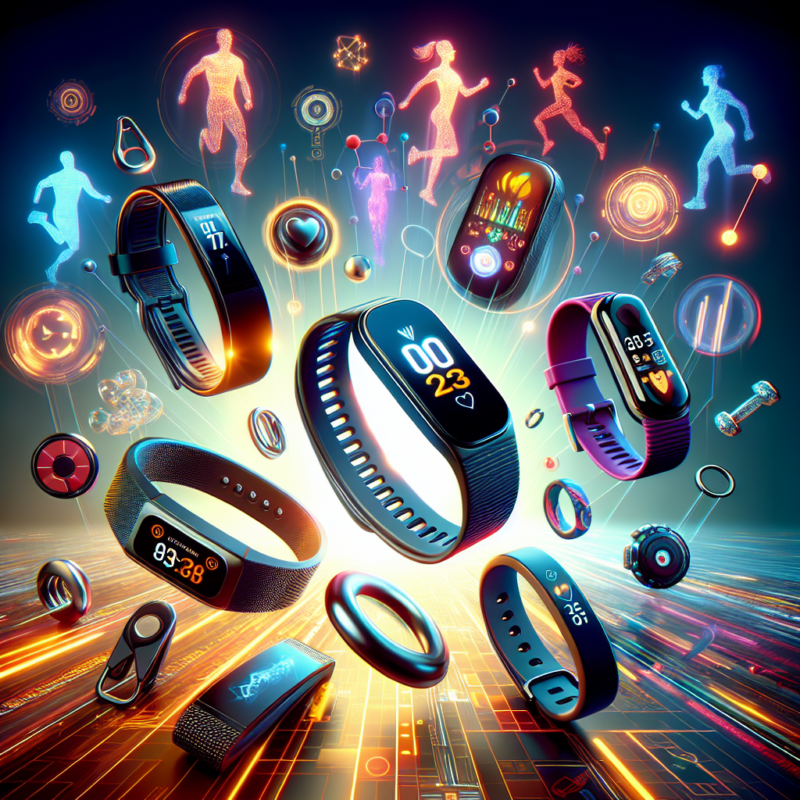How Wearable Fitness Technology is Changing the Way We Exercise

In today’s fast-paced world, where technology is seamlessly woven into our daily routines, wearable fitness technology has emerged as a game-changer in the realm of physical fitness. This innovative technology empowers individuals to track their activities, monitor their health metrics, and optimize their workouts like never before. Consequently, understanding how wearable fitness technology is changing the way we exercise is essential not only for fitness enthusiasts but for anyone aiming to enhance their overall well-being.
The Rise of Wearable Fitness Devices
The advent of wearable fitness devices has transformed the landscape of health and wellness. What began as simple pedometers has evolved into sophisticated gadgets that monitor everything from heart rate and sleep patterns to GPS tracking for outdoor activities. Today’s devices, such as smartwatches and fitness bands, are equipped with advanced sensors that provide real-time data, making it easier for users to set fitness goals and track their progress.
As more individuals adopt these devices, the industry has witnessed unparalleled growth. According to market reports, the wearable fitness technology market is projected to reach tens of billions of dollars by 2025, reflecting the increasing interest in integrating technology into daily exercise routines. This widespread adoption has led to a significant cultural shift that prioritizes health data collection, creating a more engaged and informed fitness community.
Real-Time Health Monitoring and Its Impact
The ability to monitor vital health metrics in real-time is one of the most significant advantages of wearable fitness technology. Devices can track steps, heart rate, calories burned, and even stress levels, providing users with instant feedback about their physical condition. This real-time information can be a powerful motivator, enabling users to adjust their activities based on immediate feedback. For example, if a wearable detects that a user’s heart rate is too high, they may choose to take a break or slow down their workout.
Moreover, the aggregation of this health data over time allows for better long-term insights. Individuals can identify patterns in their fitness routines, discern what types of exercises yield the best results, and make informed decisions about their health habits. This data-driven approach not only enables users to optimize their workouts but also helps them lead healthier lifestyles overall.
Enhanced Personalization in Fitness Regimens
Customization is another critical area where wearable fitness technology is making a significant impact. Many devices offer the ability to set specific goals, tailored workout plans, and even personalized coaching. Advanced algorithms analyze users’ data and can suggest personalized training regimens that align with their fitness levels and objectives. This level of tailoring wasn’t possible with traditional exercise methods, where a one-size-fits-all approach dominated.
For instance, if a beginner sets a goal of running a marathon, the wearable device can create a coherent training plan that gradually increases distance and intensity based on their progress. This personalized approach fosters a strong sense of ownership over one’s fitness journey and can dramatically enhance motivation and adherence to workout plans. As a result, users are more likely to achieve their fitness goals and maintain a consistent exercise routine.
The Role of Community and Social Engagement
Wearable fitness technology has also revolutionized how individuals engage with their fitness communities. Social features found in many apps allow users to share their progress, compete in challenges, and motivate each other. This increased social interaction creates a supportive environment that encourages individuals to persevere through their fitness challenges.
The social aspect can be particularly beneficial for users who may feel isolated in their fitness journeys, inspiring them to push their limits and celebrate their achievements with others. These interactions foster a sense of belonging, transforming solitary workouts into communal experiences. The sense of competition, whether friendly or serious, plays a significant role in enhancing performance, as users strive to surpass their peers.
Integrating Wellness and Lifestyle Beyond Exercise
In addition to tracking workouts and physical activity, wearable fitness technology is increasingly helping users focus on holistic wellness. Many devices now monitor sleep patterns, hydration levels, and stress management, encouraging users to adopt healthier habits outside of the gym. For example, insights into sleep quality can prompt users to adjust their evening routines to achieve better rest, ultimately enhancing their athletic performance.
The integration of wellness metrics fosters a balanced approach to fitness, underscoring that exercise is just one component of overall health. By embracing this holistic view, users are more likely to adopt sustainable practices that contribute to their overall well-being. This broader scope allows people to understand how lifestyle factors impact their fitness levels and encourages them to take a comprehensive approach to their health.
The Future of Wearable Fitness Technology
Looking ahead, the future of wearable fitness technology is poised for remarkable advancements. Innovations such as AI integration, enhanced biometric sensing, and augmented reality experiences are on the horizon. AI algorithms could provide insights based on a user’s history and preferences, offering even more tailored advice and support. This could take data-driven fitness to new heights, enabling users to optimize their workouts in real-time with unprecedented precision.
Moreover, the development of wearable devices that seamlessly integrate with smart-home systems could elevate user experience to a whole new level. Imagine receiving exercise reminders or hydration prompts directly through your environment while you move from one activity to another. These futuristic integrations emphasize the potential for wearable technology to extend beyond personal fitness and influence overall lifestyle management.
The growing awareness surrounding health and fitness will inevitably lead to an increased demand for these next-generation wearable devices. As technology continues to evolve, it is vital for users to stay informed about the latest features and developments. Embracing this wave of innovation will allow individuals to maintain their edge in an increasingly competitive fitness landscape.
Conclusion
In summary, wearable fitness technology is redefining the landscape of exercise and wellness, offering insights, motivation, and personalization to users around the globe. As these devices continue to evolve, their ability to track health metrics, customize fitness regimens, foster community engagement, and integrate holistic wellness practices will empower individuals to take control of their health like never before. The future promises exciting advancements that will further revolutionize how we approach physical fitness and well-being.
FAQs
What types of wearable fitness technology are available?
Wearable fitness technology encompasses a wide range of devices, including fitness trackers, smartwatches, heart rate monitors, smart clothing, and even advanced wearable sensors that provide biometric feedback.
Can wearable fitness technology help with weight loss?
Yes, wearable fitness technology can motivate individuals towards weight loss by tracking calories burned, monitoring activity levels, and providing insights into eating habits. Consistency and awareness are key factors in achieving weight loss goals.
How accurate are the metrics provided by wearable fitness devices?
While wearable fitness devices offer useful insights, their accuracy can vary. Factors such as device quality, user placement, and environmental conditions can influence measurements. However, when used consistently, they can be valuable tools in tracking health and fitness trends over time.
Do I need to have a wearable fitness device to get fit?
No, a wearable fitness device is not necessary for getting fit. Traditional methods such as exercising regularly, following a balanced diet, and setting personal fitness goals can be equally effective.
Can I use wearable technology to monitor my health condition?
Yes, many wearable devices allow users to track specific health metrics that can provide insights into conditions such as heart disease or diabetes. However, it is essential to consult with healthcare professionals for personalized health advice or diagnosis.


